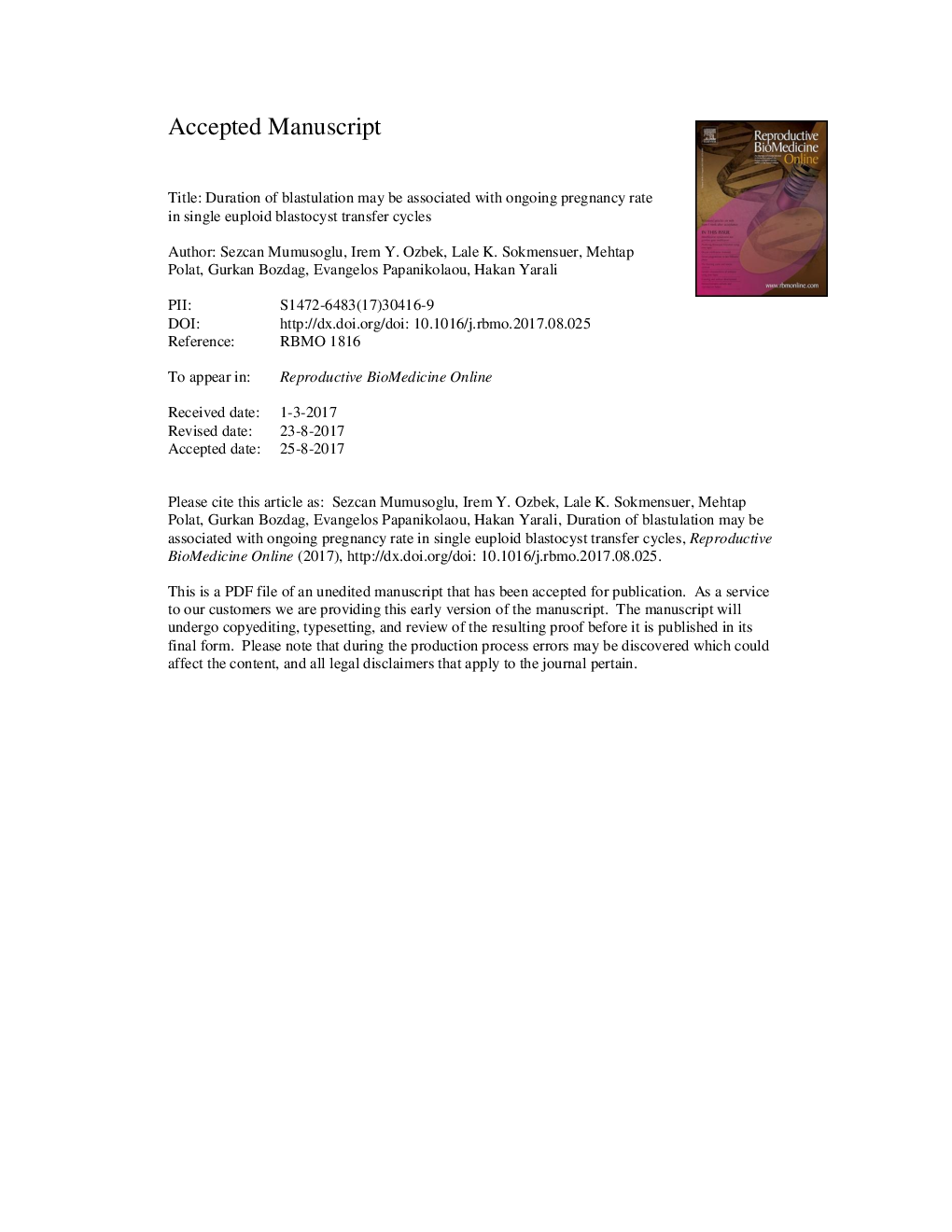| Article ID | Journal | Published Year | Pages | File Type |
|---|---|---|---|---|
| 8784114 | Reproductive BioMedicine Online | 2017 | 30 Pages |
Abstract
Not all euploid embryos implant, necessitating additional tools to select viable blastocysts in preimplantation genetic screening cycles. In this retrospective cohort study, 129 consecutive patients who underwent 129 single euploid blastocyst transfers in cryopreserved embryo transfer cycles were included. All embryos were individually cultured in a time-lapse incubator from intracytoplasmic sperm injection up to trophoectoderm biopsy. Twenty-three time-lapse morphokinetic variables were tested among patients with (n = 68) or without (n = 61) ongoing pregnancy. All 23 time-lapse morphokinetic variables, apart from duration of blastulation (tB-tSB), were comparable between patients with or without ongoing pregnancy. Duration of blastulation was significantly shorter in patients with ongoing pregnancy (8.1 ± 3.2 versus 9.5 ± 3.4âh; P = 0.014); shorter duration of blastulation remained an independent predictor for ongoing pregnancy, when tested by logistic regression analysis (OR 0.81; 95% CI 0.70 to 0.93). One important limitation of this study, and a reason for caution, is the use of multiple comparisons, which can lead to differences at the 0.05 level simply by chance or random variation. Nonetheless, the study suggests that when more than one euploid blastocyst is available, priority might be given to those with a shorter duration of blastulation.
Related Topics
Health Sciences
Medicine and Dentistry
Obstetrics, Gynecology and Women's Health
Authors
Sezcan Mumusoglu, Irem Y. Ozbek, Lale K. Sokmensuer, Mehtap Polat, Gurkan Bozdag, Evangelos Papanikolaou, Hakan Yarali,
